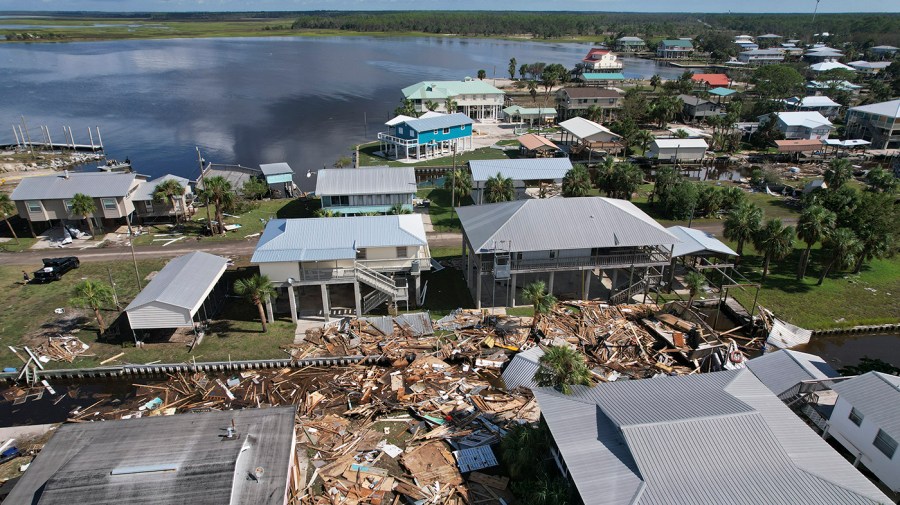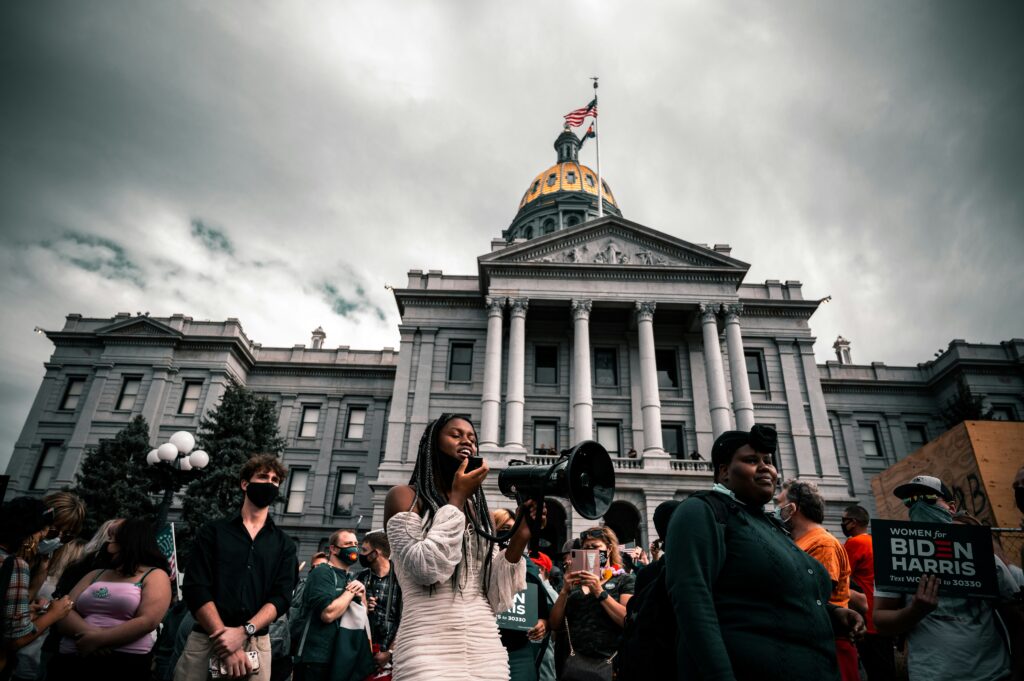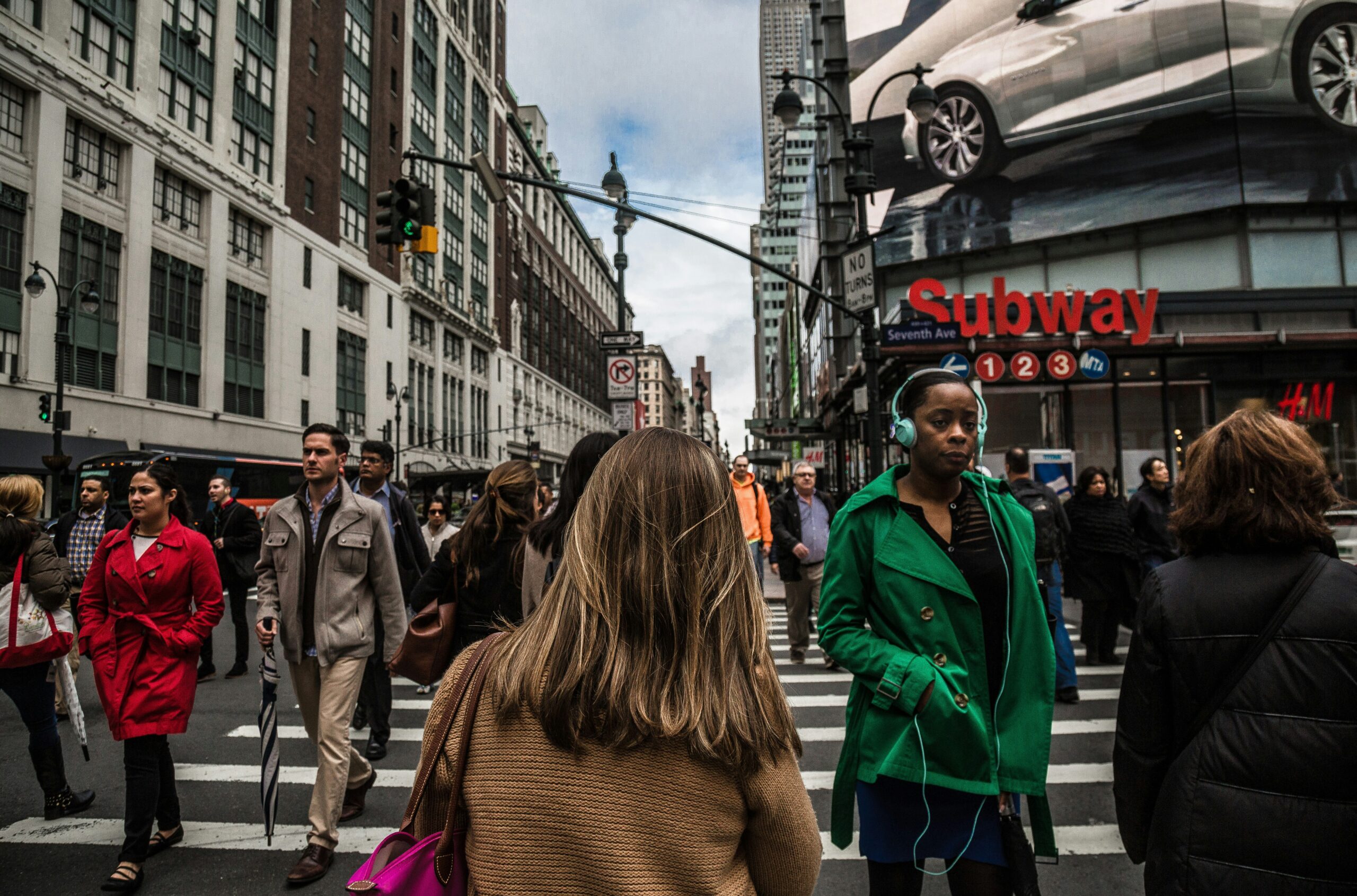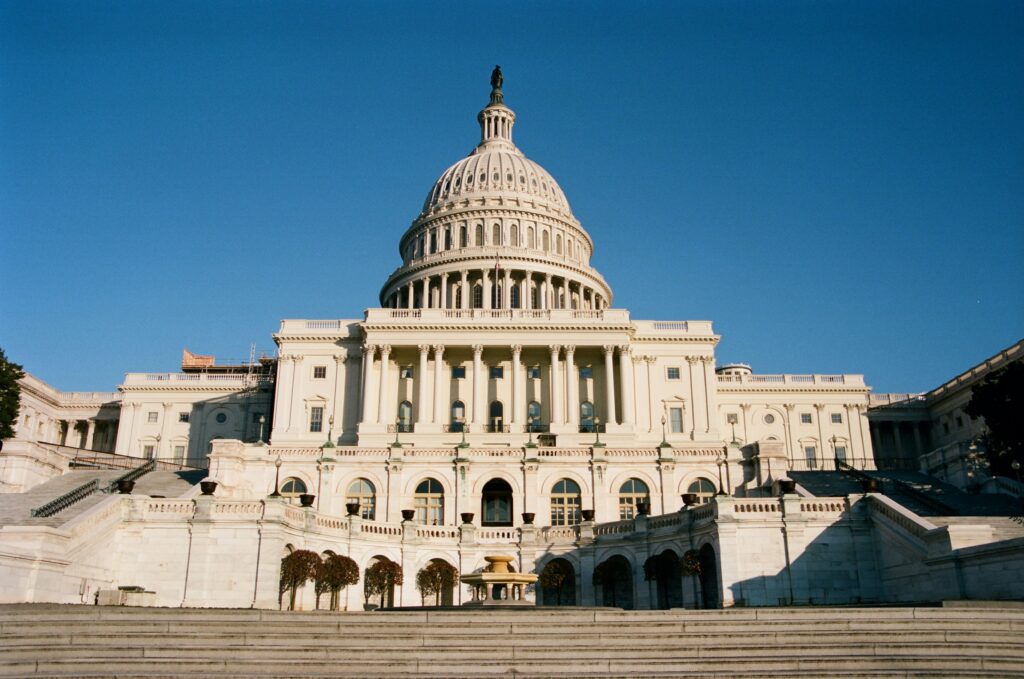Business
Congress faces ticking clock on flood insurance as hurricane season picks up on September 1, 2023 at 9:30 am Business News | The Hill

Congress is facing a time crunch to prevent a lapse for the National Flood Insurance Program (NFIP) as hurricane season intensifies.
As fears of a shutdown swirl around a heated funding debate in Washington, D.C., there is some concern that NFIP’s authorization could get entangled in the fight.
Funding for the federal government and NFIP’s authorization will both expire after Sept. 30, and lawmakers are nowhere close to reaching a deal to avoid a shutdown.
Previously issued federal flood insurance policies would still be active if the NFIP isn’t reauthorized. But the program would be unable to issue new policies and face other funding constraints as thousands of Americans grapple with the damage of hurricanes.
“A lapse of the NFIP at the height of hurricane season would be an apocalyptic nightmare,” Sen. Bob Menéndez (D-N.J.) told The Hill in a statement this week.
“Families have faithfully paid their premiums, in many cases for years and even decades, and it’s Congress’ responsibility to ensure the NFIP is fully authorized to pay out claims and write new policies.”
Research finds the program’s lack of authority to issue flood insurance policies could also derail thousands of real estate transactions.
Leaders on both sides of the aisle are eyeing a continuing resolution (CR) to prevent a shutdown. A CR would freeze government funding at current levels and give Democrats and Republicans more time to strike a deal.
But Speaker Kevin McCarthy (R-Calif.) is struggling to lock down support from House conservatives as the party’s right flank seeks to use the deadline as leverage for spending cuts.
“McCarthy has said he wants to do a CR into early December,” Bill Killmer, chief lobbyist at Mortgage Bankers Association, said, but he noted questions remain around what “an appetite for CR or what the duration of an acceptable CR would be” for the conference.
“That’ll be kind of an opening salvo that will include policy questions like flood insurance,” he told The Hill.
A spokesperson for Senate Banking Committee Chair Sherrod Brown (D-OH) told The Hill that the “committee will continue to work to ensure the program does not lapse.”
Kilmer said the stakes “are already pretty high” for the program with the coming reauthorization deadline. The current hurricane season “certainly heightens awareness,” as tropical storm Idalia travels the Southeast, he added.
Idalia hit Florida earlier this week as a Category 3 hurricane, leaving thousands of homes without power as with winds estimated to reach 125 miles per hour. It was reportedly the strongest storm to reach the Big Bend area in more than a century and helped drive the fifth-highest tide levels in Charleston Harbor, South Carolina.
Idalia has since been downgraded to a tropical storm and is moving along the Carolinas.
Analysts are already beginning to assess the costs, with some recent estimates placing the price tag for insurance claims in the range of about $9.36 billion.
A report released from National Centers for Environmental Information (NCEI) found that the U.S. saw 15 billion-dollar disasters in the first seven months of this year — the most in more than four decades.
“People can speculate why we’re having more of these particular events, but obviously if you got the severe weather [of] what’s happening in Florida, that can put a strain on the system for any of these programs,” Killmer said.
According to the Congressional Research Service (CRS), the flood insurance program has more than five million policies that provide more than $1 trillion in coverage, filling in a gap left by private insurance.
The program is part of the Federal Emergency Management Agency (FEMA) and funded in part through premiums and other payments from policyholders. The annual appropriations process also funds activities like mapping flood hazards and analyzing risk.
The NFIP was not “designed to retain funding to cover claims for truly extreme events,” the RS wrote, and was able to borrow “relatively small amounts” from the Treasury Department to pay claims and eventually repay loans with interest.
But this has changed over the years as the nation has seen more extreme weather.
Following the 2005 hurricane season, the office said the borrowing limit to cover claims was upped to more than $20 billion after deadly hurricanes like Katrina left thousands without homes. The limit was later increased to $30.4 billion following Hurricane Sandy in 2013.
Joseph Kane, a fellow at the Brookings Institution, and other experts say the current funding structure is not sustainable.
“It wasn’t designed to handle these huge bursts in climate risk and huge climate costs,” Kane said.
“So, I think that’s a challenge facing federal leaders, but, obviously, of course state local leaders across the country. I mean are they just gonna keep rebuilding in all these places?”
The program owed more than $24 billion at the onset of the 2017 hurricane season, the CRS found, when the nation was hit by hurricanes like Harvey, Irma, and Maria. Lawmakers canceled $16 billion of the program’s debt in October and the debt shot up to more than $20 billion not long after.
“We need a model of resilience rather than a model of disaster recovery, because the costs are just so significant once disaster hits, the recovery costs that is, that is just impossible to stay ahead of,” Kane said.
Lawmakers have weighed potential reforms to the program in recent years and have passed 25 short-term reauthorizations since fiscal year 2017.
Some experts also see a crisis taking hold in the private insurance market.
“We’ve got an insurance crisis really around the country in certain key states, homeowners’ insurance availability, where some big carriers are pulling out,” Killmer said. “This is really cute on the commercial multifamily side as well.”
“It’s generally California, Florida, states like that, but we’re hearing about it from members all around the country,” Killmer said, adding “there’s not enough availability to close that gap” on the private insurance end. He argued that “underscores that critical need” to prevent a lapse for the NFIP.
Business, Energy & Environment Congress is facing a time crunch to prevent a lapse for the National Flood Insurance Program (NFIP) as hurricane season intensifies. As fears of a shutdown swirl around a heated funding debate in Washington, D.C., there is some concern that NFIP’s authorization could get entangled in the fight. Funding for the federal government and NFIP’s…
Business
The Cities Bracing for Trump’s Immigration Crackdown

In the wake of Donald Trump’s recent election victory and his promise of “the largest deportation operation in American history,” several major U.S. cities are bracing for potentially seismic shifts in their economic and social landscapes. As the nation grapples with the implications of this proposed policy, urban centers that have long been havens for immigrant communities find themselves at the epicenter of a looming storm.
Los Angeles, often dubbed the “City of Angels,” stands to lose more than its celestial nickname suggests. As a primary gateway for immigrants, the city’s vibrant tapestry of cultures and its economic engine could face significant disruption. From the bustling streets of Koreatown to the sun-drenched orchards of the Central Valley, the absence of undocumented workers could leave gaping holes in the city’s workforce and cultural identity.
Across the country, New York City, with its iconic skyline and melting pot reputation, faces its own reckoning. The Big Apple’s 5.9 million immigrants, many of whom are undocumented, form the backbone of industries ranging from construction to healthcare. The potential exodus could transform neighborhoods like Jackson Heights and Flushing, altering the very essence of what makes New York a global city.In the Sunshine State, Miami’s tropical allure belies the turbulent times ahead. Home to 2.5 million immigrants, the city’s economy relies heavily on sectors like tourism and hospitality – industries where undocumented workers often fill crucial roles. The potential deportation of these workers could send shockwaves through Miami’s economic ecosystem, from South Beach’s glitzy hotels to the agricultural heartlands of South Florida.
Chicago, the “City of Big Shoulders,” may find those shoulders significantly weakened. With 1.7 million immigrants in its metropolitan area, the Windy City’s diverse neighborhoods and industries face an uncertain future. From the meatpacking plants to the tech startups, Chicago’s economic resilience could be tested like never before.
In the Lone Star State, Houston and Dallas stand as twin testaments to the complexities of immigration policy. These Texas titans, each home to large immigrant populations, could see their booming economies stumble. The construction sites that dot their ever-expanding skylines and the service industries that keep these cities humming could face unprecedented labor shortages.

Out West, the San Francisco Bay Area’s reputation as a bastion of innovation and progress could be challenged. The region’s tech industry, often reliant on immigrant talent, might find itself grappling with a new reality. From Silicon Valley’s coding campuses to the agricultural expanses of the Central Valley, California’s economic powerhouse could face a reckoning. Phoenix, rising from the Sonoran Desert, could see its growth trajectory altered. As Arizona’s urban center, it stands at the forefront of the immigration debate, potentially facing not just economic impacts but social and political upheaval as well.
These cities, along with others like San Diego and Las Vegas, are not just facing potential economic disruptions. They are staring down the barrel of profound social change. Family separations, community fragmentation, and the erosion of cultural enclaves built over generations are all possible consequences of mass deportations. Moreover, the fiscal implications are staggering. Undocumented immigrants contribute billions in taxes annually, often without receiving the full benefits of their contributions. Their sudden absence could leave gaping holes in city budgets, potentially affecting public services and infrastructure projects.
As these urban centers brace for impact, the debate rages on. Supporters of stricter immigration policies argue for the need to enforce laws and protect American jobs. Critics warn of economic devastation and the unraveling of America’s urban fabric. What’s clear is that America’s cities stand at a crossroads. The coming months and years will likely reshape urban landscapes in ways both visible and invisible. From the foods we eat to the services we rely on, from the neighborhoods we call home to the very character of our cities, the impacts of this proposed immigration crackdown could be far-reaching and long-lasting. As the nation watches and waits, these cities – vibrant, diverse, and economically vital – find themselves on the front lines of a policy that could redefine what it means to be an American city in the 21st century.
Bolanle Media is excited to announce our partnership with The Newbie Film Academy to offer comprehensive courses designed specifically for aspiring filmmakers. Whether you’re just starting out or looking to enhance your skills, our resources will provide you with the tools and knowledge needed to succeed in the competitive world of screenwriting. Join us today to unlock your creative potential and take your first steps toward crafting compelling stories that resonate with audiences. Let’s turn your ideas into impactful scripts together!
Business
How Trump’s Deportation Plans Could Reshape Major Cities

In the wake of Donald Trump’s recent election victory, his ambitious plans for mass deportations have thrust America’s urban centers into the spotlight. As the nation grapples with the potential implications of what Trump calls “the largest deportation operation in American history,” cities across the country are bracing for significant changes that could reshape their economic, social, and cultural landscapes.

The stakes are particularly high for metropolitan areas like New York, Los Angeles, Houston, Dallas, and Miami, which host the largest populations of unauthorized immigrants. These cities, along with other major urban hubs such as Chicago, Washington D.C., and San Francisco, stand at the forefront of a looming transformation that could reverberate throughout the nation.
Economic Tremors
Economists warn that the proposed deportations could send shockwaves through urban economies. Mark Zandi, chief economist at Moody’s, cautions that businesses would face “significant challenges” if a substantial number of immigrants were removed. Industries such as construction, hospitality, and healthcare—pillars of urban economies—could face severe labor shortages.
Joe Brusuelas, chief economist at RSM, emphasizes the potential ripple effects: “The native-born workforce cannot meet current labor demands.” This labor gap could lead to increased wages, potentially rekindling inflation—a concern that looms large over city planners and policymakers alike.
Community Fabric Under Strain
Beyond economic considerations, the social fabric of cities hangs in the balance. Elena, a Nicaraguan immigrant in Houston, voices a fear echoed in immigrant communities across the nation: “I’m scared… This is my home.” The threat of family separations, particularly in mixed-status households, casts a long shadow over urban neighborhoods.
Immigrant advocacy groups like FIEL are mobilizing, advising clients to prepare for “anything that can happen.” This atmosphere of uncertainty could lead to decreased community engagement and cooperation with local authorities, potentially impacting public safety and community cohesion.

Cities at a Crossroads
As the debate intensifies, cities find themselves at a crossroads. Some, like New York and Los Angeles, have historically positioned themselves as “sanctuary cities,” often at odds with federal immigration enforcement. The impending clash between federal policy and local governance promises to be a defining feature of this new political landscape.
Meanwhile, the logistical challenges of implementing such a massive deportation operation remain daunting. Questions abound regarding detention facilities, transportation networks, and the sheer manpower required to carry out Trump’s vision.
Looking Ahead
As America’s urban centers brace for potential change, the full impact of Trump’s deportation plans remains to be seen. Legal challenges are all but certain, and the resilience of America’s cities will be put to the test.
What is clear is that the coming months and years will be pivotal for urban America. As Jason Miller, a senior Trump adviser, puts it, the plan is to “immediately reinstate” immigration policies from Trump’s first term. For America’s cities, this could mean a period of unprecedented change, challenge, and, potentially, transformation.
As the nation watches and waits, the story of America’s cities in the face of this ambitious deportation plan is just beginning to unfold. The outcome will undoubtedly shape the future of urban life in America for years to come.
Bolanle Media is excited to announce our partnership with The Newbie Film Academy to offer comprehensive courses designed specifically for aspiring screenwriters. Whether you’re just starting out or looking to enhance your skills, our resources will provide you with the tools and knowledge needed to succeed in the competitive world of screenwriting. Join us today to unlock your creative potential and take your first steps toward crafting compelling stories that resonate with audiences. Let’s turn your ideas into impactful scripts together!
Business
Donald Trump Wins 2024 USA Election

Based on the election results, Donald Trump has indeed won the 2024 U.S. presidential election, defeating Vice President Kamala Harris. Here’s an analysis of the key statistics and implications:
Electoral College Victory
Donald Trump has secured the presidency by winning crucial battleground states and flipping some key states that were previously held by Democrats. The final Electoral College tally is still being determined, but Trump has surpassed the 270 electoral votes needed to win.
Battleground State Performance
Trump’s victory was largely secured by winning several critical swing states:
- Wisconsin: Trump’s win here was pivotal in securing his path to victory.
- Pennsylvania: This state flipped back to Republican control.
- Georgia: Another key state that Trump managed to win back.
- Michigan: Trump successfully flipped this traditionally Democratic stronghold.
Popular Vote and Voter Priorities
While the final popular vote tally is still being calculated, exit polls provide insight into voter priorities:
- Economy and democracy were top concerns for voters.
- Abortion and immigration also played significant roles in voter decision-making.
Congressional Control
The election results extend beyond the presidency:
- Republicans are set to take back the Senate majority, securing at least 51 seats.
- Control of the House of Representatives remains undetermined.

Media Implications
The outcome of this election could be seen as a challenge to mainstream media narratives for several reasons:
- Polling Discrepancies: Many pre-election polls suggested a tight race or even a slight Harris advantage in key states. Trump’s victory, particularly in battleground states, may indicate that polls underestimated his support.
- Narrative Shifts: Throughout the campaign, much of the mainstream media focused on Trump’s legal challenges and controversies. His victory suggests that these issues may not have resonated with voters as much as economic and policy concerns.
- Voter Priorities: The emphasis on issues like the economy and immigration in voter decision-making may indicate a disconnect between media focus and voter concerns.
- Electoral Predictions: Many mainstream outlets were cautious about predicting a Trump victory, even as results began to favor him. This hesitancy could be seen as a reflection of broader media skepticism about Trump’s chances.
- Underestimation of Trump’s Base: The results suggest that Trump’s core support remained strong and potentially grew, despite negative coverage in much of the mainstream media.
It’s important to note that while the election outcome may challenge some media narratives, it doesn’t necessarily invalidate all mainstream reporting. The complex factors influencing voter behavior and the challenges of accurate political forecasting remain subjects of ongoing analysis and debate.
As the dust settles on this historic election, both the media and political analysts will likely engage in extensive reflection on the factors that led to Trump’s victory and the implications for future political coverage and analysis.
Bolanle Media is excited to announce our partnership with The Newbie Film Academy to offer comprehensive courses designed specifically for aspiring screenwriters. Whether you’re just starting out or looking to enhance your skills, our resources will provide you with the tools and knowledge needed to succeed in the competitive world of screenwriting. Join us today to unlock your creative potential and take your first steps toward crafting compelling stories that resonate with audiences. Let’s turn your ideas into impactful scripts together!
-

 News4 weeks ago
News4 weeks agoThe Hemp Village’s Inaugural Brunch: A Celebration of Resilience and Community Spirit
-

 Advice3 weeks ago
Advice3 weeks agoHow Community Engagement Ignites Cultural Phenomena
-

 Advice3 days ago
Advice3 days agoHow to Create Unforgettable Movie Scenes
-

 Advice3 days ago
Advice3 days agoMaster the Art of Film Casting
-

 Advice2 weeks ago
Advice2 weeks agoA Reality Check for Aspiring Filmmakers
-

 Advice3 days ago
Advice3 days agoReinventing Genres: Tips for Filmmakers
-

 Advice4 days ago
Advice4 days agoScreenwriting Tips for Aspiring Filmmakers
-

 Advice2 weeks ago
Advice2 weeks agoThe 1% Club: Breaking Into the Elite Circle of Sold Screenplays







